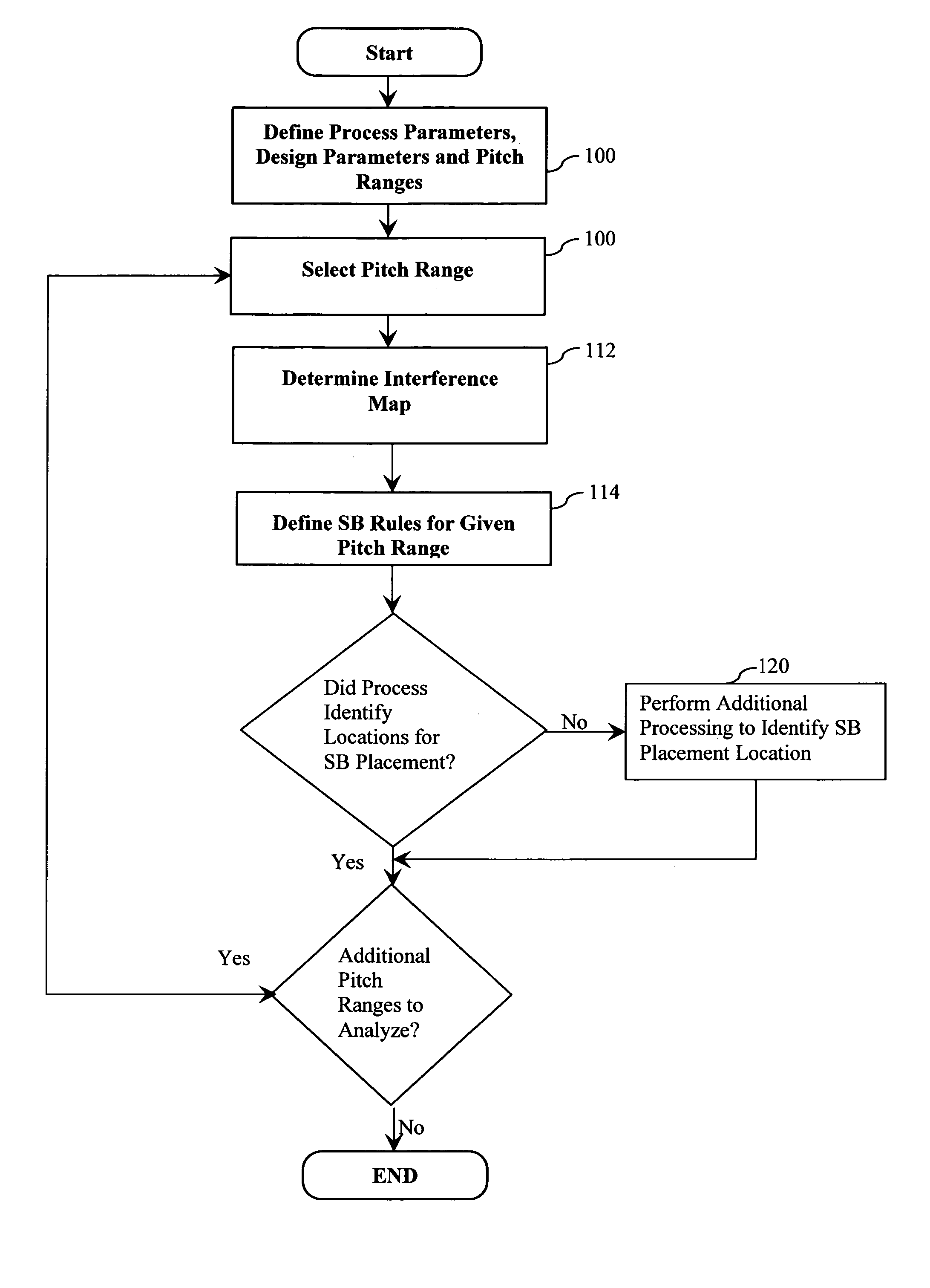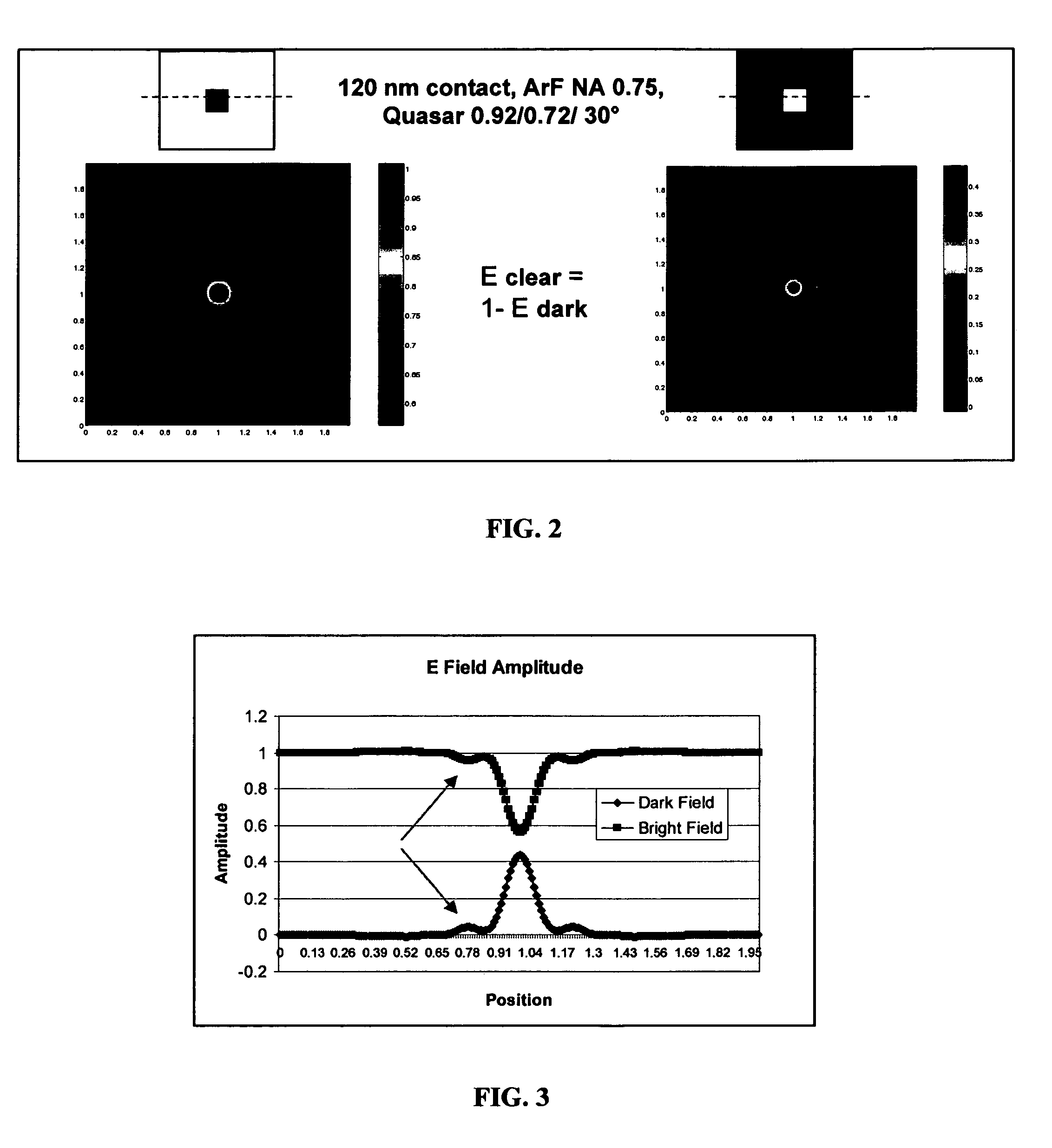Method and apparatus for generating OPC rules for placement of scattering bar features utilizing interface mapping technology
a technology of interface mapping and feature placement, applied in special data processing applications, optics, instruments, etc., can solve the problems of reducing the size of an integrated circuit, cd (critical dimension) of its corresponding mask pattern approaching the resolution limit of the optical exposure tool, and still be a difficult process, so as to improve the performance of sb placement
- Summary
- Abstract
- Description
- Claims
- Application Information
AI Technical Summary
Benefits of technology
Problems solved by technology
Method used
Image
Examples
Embodiment Construction
[0033]As explained in more detail below, the rule-based approach of the present invention for applying scattering bars to a mask design, which utilizes the interference map in the rule formation process, simplifies the process of applying the scattering bars to the mask design, and allows for a robust application of scattering bars to the design without requiring a significant amount of calculations to be performed by the CAD system, thereby minimizing the amount of time required to complete the design process. Further, the method also allows for rapid determination of the locations to apply scattering bars in areas not necessarily identified by the interference map to require scattering bars.
[0034]FIGS. 1a-1d illustrates an example of the generation of an interference map for an isolated contact illuminated using Quasar™ illumination, which can be generated using either an empirical method or a simulation method as detailed in U.S. patent application Ser. Nos. 10 / 756,829 filed on J...
PUM
| Property | Measurement | Unit |
|---|---|---|
| wavelength | aaaaa | aaaaa |
| wavelength | aaaaa | aaaaa |
| wavelength | aaaaa | aaaaa |
Abstract
Description
Claims
Application Information
 Login to View More
Login to View More - R&D
- Intellectual Property
- Life Sciences
- Materials
- Tech Scout
- Unparalleled Data Quality
- Higher Quality Content
- 60% Fewer Hallucinations
Browse by: Latest US Patents, China's latest patents, Technical Efficacy Thesaurus, Application Domain, Technology Topic, Popular Technical Reports.
© 2025 PatSnap. All rights reserved.Legal|Privacy policy|Modern Slavery Act Transparency Statement|Sitemap|About US| Contact US: help@patsnap.com



